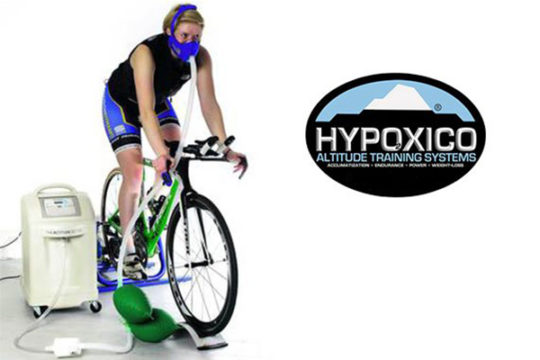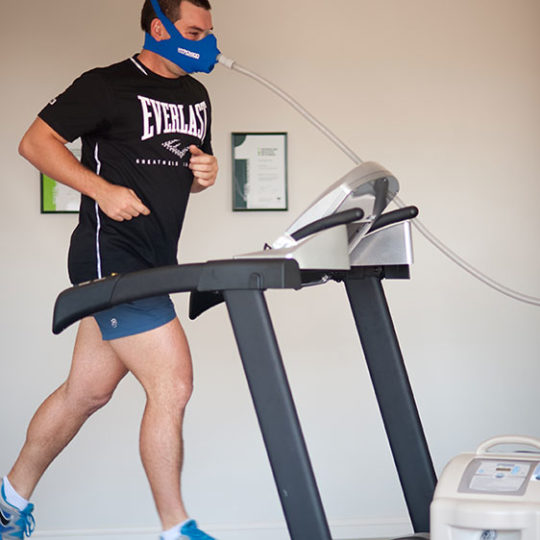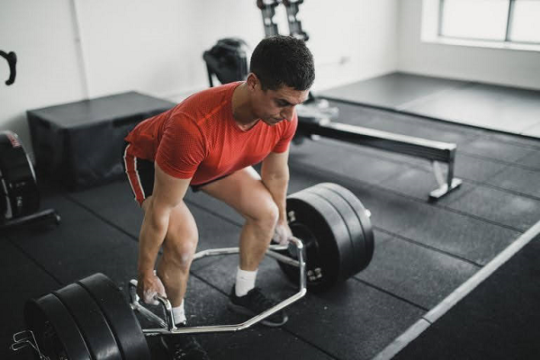
Exercising at Altitude
Exercising in hypoxia has been proven to improve muscular endurance and increase fitness through intensified aerobic and anaerobic training sessions. Training under intermittent hypoxia optimally prepares an individual for competition at altitude or sea-level by improving breathing economy, and the ability to stay saturated with oxygen whether they are in Death Valley or the Rocky Mountains.
The result is that the athlete feels less fatigued and will recover quicker, leading to increased training intensity and physiological adaptation. Studies have proven significant (often staggering) improvement for repeat sprint ability, increasing anabolic hormonal responses and increased red blood cell mass – all of which are enormously valuable across all contexts of sport.
One study done on elite male triathletes showed a 7% increase in VO2max and a 7.4% increase in mean maximal power ouput/Kg body weight (Wmax) after 10 days of exercise training at a simulated altitude of 8000ft/2500m. That kind of improvement is unheard of using any other legal means of training.
Live Low – Train High
Let’s face it, sleeping in an altitude tent doesn’t always fit with every person’s lifestyle. Luckily, athletes can experience the same physiological benefits of hypoxia by performing training sessions at simulated altitude. Since being developed by the Soviets in the 1930’s LLTH has evolved a lot. Contemporary research indicates enormous benefits both aerobically and anaerobically, making active IHT a highly valuable and important part of any athlete’s altitude training strategy.
Altitude Training for Athletes
 Altitude training for athletes improves physical performance at sea-level and at altitude by enhancing muscle function and increasing the body’s ability to uptake and transport oxygen. Through sleeping, exercising, and/or intermittent breathing, individuals, and teams can naturally and legally increase power, endurance, and recovery. Perfect for elite athletes.
Altitude training for athletes improves physical performance at sea-level and at altitude by enhancing muscle function and increasing the body’s ability to uptake and transport oxygen. Through sleeping, exercising, and/or intermittent breathing, individuals, and teams can naturally and legally increase power, endurance, and recovery. Perfect for elite athletes.
Athletes in every sport are now realizing the performance benefits that altitude training can have on strength, power, and endurance. Through a combination of sleeping in normobaric hypoxia and exercising at altitude 2-3 times per week, athletes can increase performance to otherwise unachievable levels. Scientific studies have shown improvements in VO2 Max and Lactate Threshold by as much as 10%.
The proper altitude training program can substantially boost body’s oxygen transport systems through enhanced ventilation, naturally increased EPO production and increased mitochondrial efficiency. This will allow more efficient energy production both aerobically as well as anaerobically. Ultimately this will allow the athlete to experience:
- Increased endurance and speed
- Less Fatigue
- Improved recovery
Altitude training has been proven to provide the following benefits to athletes:
- Increase VO2 max and lactate threshold.
- Increase power output and Speed.
- Enhance Endurance and Stamina.
- Reduce recovery time.
- Increased capillarisation (density and length), enabling increased oxygen delivery to tissues.
- Boost in mitochondrial enzymes allowing more efficient use of oxygen for energy production.
- Decreased heart rate and blood pressure.
- Increased production and release of human growth hormone.
- Stimulation on fat-burning metabolism.
Hypoxia for Health and Wellness
For decades, doctors and epidemiologists have documented that populations living at high altitudes have decreased occurrences of nearly every chronic disease known to man. Many of these conditions, like diabetes, heart disease, obesity, and Alzheimer’s, wreak havoc on contemporary society and traditional medicine has been unable to solve the problem. In addition, most of the longest-living civilizations in the world reside at elevations of greater than 10,000ft/3050m. This relationship between altitude and health is not a coincidence, and researchers have begun to uncover the science behind this reality.
The cumulative physiological adaptations associated with hypoxic training provide both your mind and body with feelings of rejuvenation. Each session will revitalize your nervous system, leaving you feeling energetic and focused for the rest of the day. Hypoxico offers a wide variety of products designed to maximize the benefits of health and wellness, customized to fit your schedule and lifestyle.
Altitude Training and Weight Loss
A 2013 study found that Americans who live at sea-level are 4 to 5 time more likely to be obese as those who live in high-altitude communities. These results remained constant, even after controlling for other factors like exercise level, socioeconomic status, and family history. In addition, Colorado is “the leanest state” in America and the only state with obesity rates below 20%. These statistics are not a coincidence but are instead a result of the increased energy expenditure required to adapt to the thin air environment.
More energy expenditure = Faster metabolic rate and more calories burned!
The same study also showed that altitude affects the way we experience hunger and satiety (feeling of fullness). The results showed that people exposed to altitude feel less hungry because levels of leptin (the satiety hormone) surge in the body, while ghrelin (the hunger hormone) remain unchanged. This remained the case even after intense exercise. So, to be clear, the subject’s metabolic rates spiked, meaning they burned more calories, but they also felt less hungry after the exercise session. This is the perfect combination for accelerated weight loss.
Increase in metabolic rate + decrease in hunger = better portion control and accelerated weight loss
“The record has shown that since 1968, 95% of all Olympic and World Championship medals from the 800 through the Marathon were won by athletes who lived or trained at altitude. It can, therefore, be concluded that altitude training is necessary for success in endurance events.” – Dr. Joe Vigil, 2008 USA Olympic Team Running Coach
Why Altitude Training Works – The Science of Altitude Training
Training at altitude has been used to improve athletic performance for decades. Following the Olympic Games in Mexico City, numerous American running records fell, and soon after researchers discovered that altitude was the reason. Since that time, many teams and individuals have used altitude training as part of their preparation. From world-class athletes to weekend warriors, altitude training is the best legal way to improve one’s performance.
Exposure to reduced oxygen levels (altitude or hypoxia) is a challenge to the human body because oxygen is the primary source of energy for our cells. Under a state of hypoxia, the body strives to produce required amounts of energy with less oxygen available. To do so, a protein called Hypoxia Inducible Factor (HIF-1) sets off a host of reactions geared toward improving the body’s ability to utilize oxygen.
There are 3 main training methods used to gain the benefits of Altitude Training: Sleeping at altitude, Exercising at altitude, and Intermittent Hypoxic Training. Visit those pages to learn more about how each of the training modalities can be beneficial to your athletic goals.
The following physiological reactions have been shown to occur:
- Amplified pulmonary oxygen absorption
- Boosted production of Erythropoietin Hormone (EPO) by the kidneys, stimulating generation of Red Blood Cells (RBCs) and enhanced oxygen transportation through the body
- Increased capillarization for greater oxygen delivery to the tissues, muscles, and brain
- Enhanced production and rejuvenation of mitochondria (the cell’s hub for aerobic energy production) and mitochondrial enzymes, allowing more efficient use of oxygen for energy production and superior enzymatic anti-oxidative defense.
Some additional benefits include:
- Decreased average Heart Rate and Blood Pressure
- Increased production and release of Human Growth Hormone
- Stimulation of fat metabolism
- Decreased oxidative stress from Free Radicals (Reactive Oxygen Species “ROS”)
Schedule Your Appointment for Hypoxico Altitude Training
Call (917) 748-2902 or Complete the Form Below and We Will Contact You Shortly.
Any information submitted will be forwarded to our office by email and not via a secure messaging system. This form should not be used to transmit private health information, and we disclaim all warranties with respect to the privacy and confidentiality of any information submitted through this form.
Schedule Your Assessment
Recent Posts







